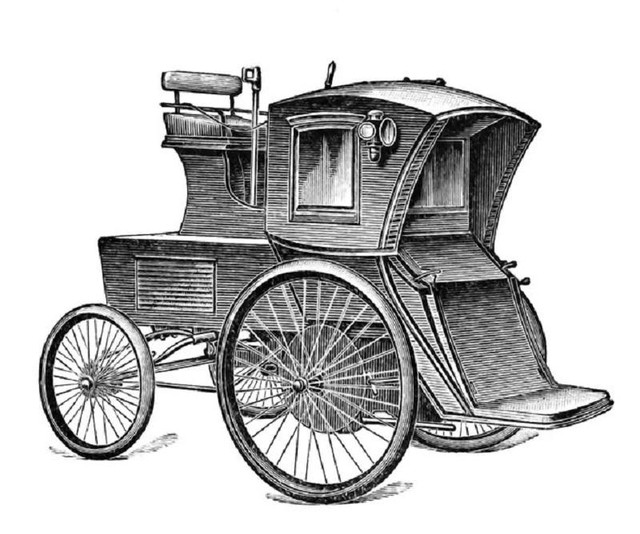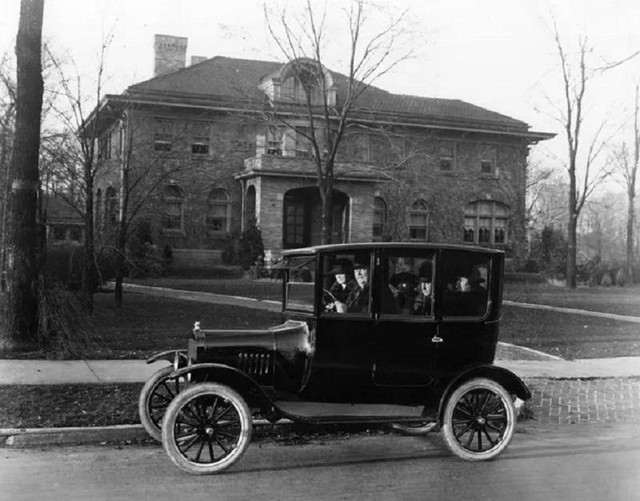Why were electric cars popular a century ago and then disappeared?
But the first electric cars in the US were made before 1900, lasted for another three decades, then stopped in production in the 1920s. For electric cars to be successful today, it’s important to see Consider why they appeared more than a century ago and why they disappeared.
History of electric vehicles
Although battery-powered models were invented in the 1830s, it was not until 1881 that a rechargeable electric battery was mounted on a horse-drawn carriage. By the early 1890s, technology had reached such sophistication that inventors made electric vehicles safer and cleaner than coal or oil-powered steam-powered vehicles (which had a tendency to explode). ). The new tram takes up less space on the road than a horse-drawn carriage and is 100% free of “horse manure”.

Electrobat, one of the first electric cars in America.
America’s first gasoline-powered car, the Duryea Machine, was introduced around the same time (in 1893), but the electric car was hailed as a cutting-edge technology. The tram starts immediately. Electric scooters are easy to operate, no gear shift required; Gasoline runs noisy, or stalls, fires, and breakdowns are more likely to happen.
In an 1895 “motorcycle” race, the Electrobat (pictured above) was awarded a gold medal for “safety, ease of handling, absence of noise, vibration, heat and odor, cleanliness and appearance overall beauty of design and workmanship” – even if the Duryea Machine won the race.
Community acceptance
Electric cars were the first cars to give people a sense of autonomy, especially women, who were able to own and drive a car decades before they had the right to vote.
Electric cars were “a symbol and vehicle for emancipation of women,” were the first machines of freedom, and car manufacturers promoted vehicles like the Detroit Electric (pictured at top) as for “a healthy woman”, a car that “she can maintain her own hygiene, intact styling”.
Expansion of electric car industry
As the electric vehicle market has grown, manufacturing companies have taken the place of individual inventors. The first companies were the Riker Electric Motor Company, founded in 1889, and the Electric Carriage & Wagon Company, which introduced a series of electric taxis (pictured below) in New York City in 1896.

Carriage & Wagon Company’s electric taxi
By the end of the century, dozens of well-funded companies had been established. The companies have produced delivery vans, taxis, rudimentary, one-, two-, and four-seat vehicles with a driving range of 35 to 88 miles and speeds up to 15 mph.
Why are electric cars disappearing?
At the turn of the 20th century, 38% of American cars were electric. Only 22% are petrol cars and the rest run on steam.
The electric vehicle industry is strengthening its position and growing as it improves efficiency, power and range. However, challenges still lie ahead, similar to those that have slowed electric vehicle adoption in the US today. Here are some of the key barriers.
Insufficient charging network
Electric vehicles are limited to only being able to operate where electricity is available. Thomas Edison opened the first power plant in 1882, but by 1910 only 10% of households in America had access to electricity, and efforts to electrify the countryside remained unfulfilled until the 1930s. Electrification is a patchwork of competing systems, voltages and frequencies, with direct current (DC) in the cities and alternating current (AC) in the countryside. The electrical system was developed by private companies, with little to no federal planning or oversight.
Sexism
This sexism stemmed from automakers’ advertising, which helped create a gas-powered car culture. Automakers have “thought out a ‘separate’ type of thinking about cars, in which petrol cars are for men, electric cars for women”.
Women were able to cross gender boundaries and use “men’s cars,” like racer Dorothy Levitt, who drove a gasoline-powered De Dion at 91 mph. But for men, driving an electric car is a sign of weakness. The Argo Company may have advertised its 1912 electric car as “a woman’s car that any man would be proud to drive,” but most men don’t want to drive a “woman’s car.” “!

The stereotype that petrol cars are for men is strong, electric cars are for women, which has partly caused electric cars to perish
Competition of petrol cars
Gasoline cars benefit from an existing fuel network that is subsidized by the federal government and operated by monopolies. John D. Rockefeller’s Standard Oil Company provided gasoline-powered cars with “the convenience of being everywhere, since gasoline could be purchased at any store in the country”.
Once gas cars become more affordable, electric cars will perish. The last nail to be hammered into the coffin of an electric car came when gasoline cars used electric ignition in 1912, making it easy to start the car. By the late 1920s, electric vehicle manufacturing was a dead industry.
What does the electric car industry need today?
The history of electric vehicles is clear: the first electric cars faced the same obstacles as electric cars today: lack of government support, uncompetitive fuel grids with gasoline-powered cars and the sexism that electric cars are for the “weak sex”. Obviously, these are not technological obstacles, but political, economic and cultural obstacles.
at Blogtuan.info – Source: autopro.com.vn – Read the original article here



